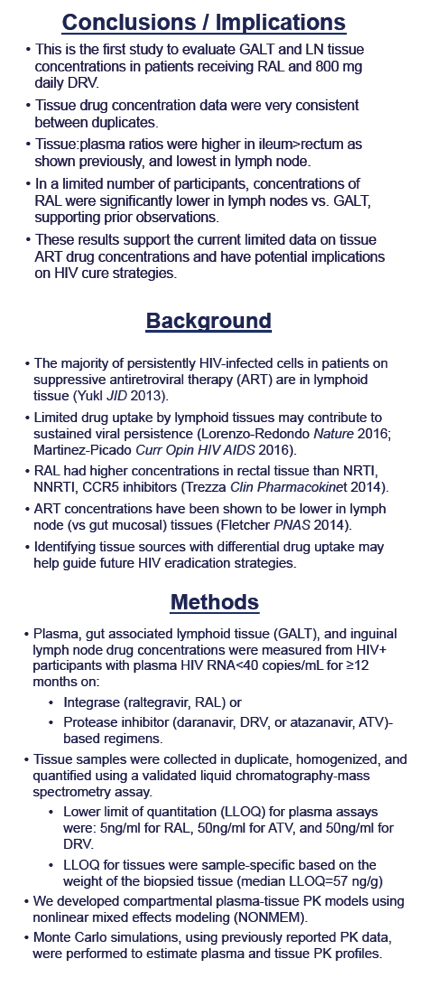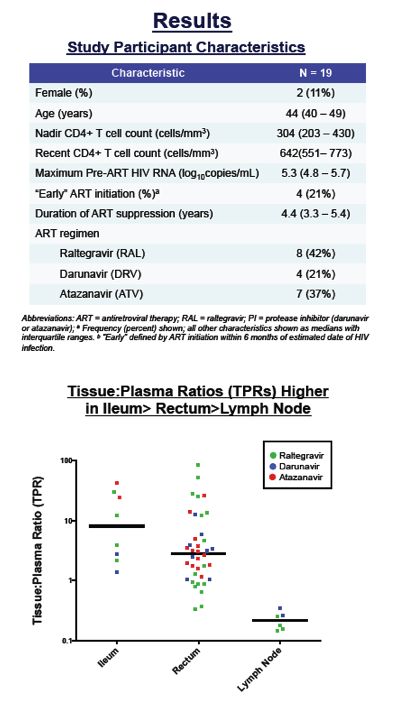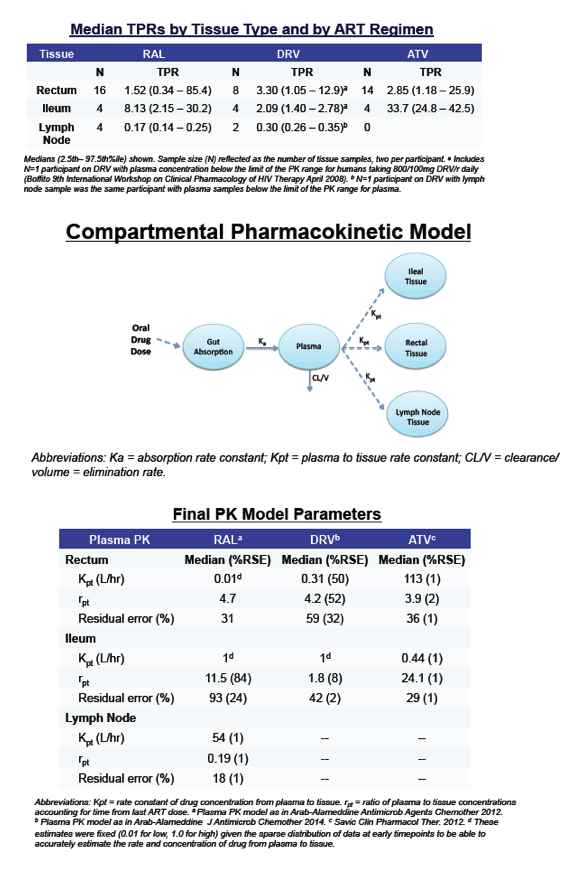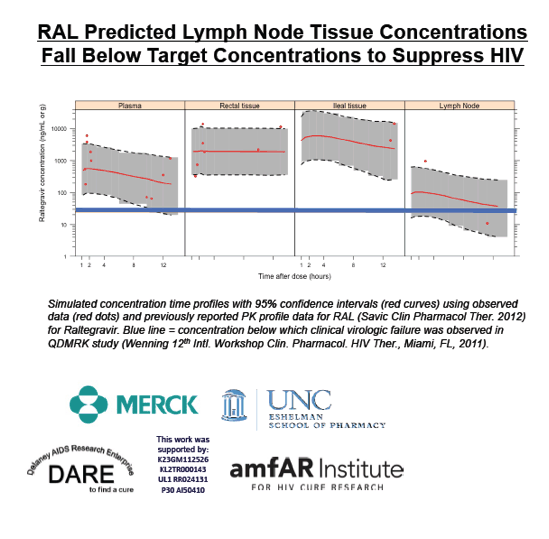 |
 |
 |
| |
INTEGRASE AND PROTEASE INHIBITOR
CONCENTRATIONS IN LYMPH NODE AND GUT MUCOSAL TISSUE
|
| |
| |
"These results support the current limited data on tissueART drug concentrations and have potential implicationson HIV cure strategies".....'Both the raw (first figure) and the modeled (last figure) data suggest that HIV meds may not get into the lymph node very well. Inadequate drug levels at the site with the most amount of latent virus in ART-suppressed HIV+ participants might then lead to low level viremia, contributing to the HIV reservoir"pool.'
Reported by Jules Levin
CROI 2017 Feb 14-16 Seattle WA
Sulggi Lee1, Hiroyu Hatano1, Angela D. Kashuba2, Mackenzie L. Cottrell2, Teri J. Liegler1, Sophie Stephenson1, Ma Somsouk1, Peter W. Hunt, Steven G. Deeks1, and Radojka M. Savic1
1 University of California San Francisco, CA, USA; 2 University of North Carolina Chapel Hill, NC, USA
from authors - "our study here is the first to evaluate these tissues in patients on raltegravir-based regimens (and once daily Darunavir; prior studies have evaluated twice daily Darunavir)....Both the raw (first figure) and the modeled (last figure) data suggest that HIV meds may not get into the lymph node very well. Inadequate drug levels at the site with the most amount of latent virus in ART-suppressed HIV+ participants might then lead to low level viremia, contributing to the HIV reservoir "pool."....Two prior papers suggest that this might be occurring (Lorenzo-Redondo Nature 2016 and Fletcher PNAS 2014). The first paper suggested that there was perhaps evidence of the HIV virus mutating over time from lymph node samples. The latter paper by Tim Schacker and Courtney Fletcher - using a totally different lab technique to measure drug concentrations in tissue that what we used here - found the same thing as our study; lower drug concentrations in the lymph node compared to GALT.....Physiologically, it could be that these drugs just have poorer penetration into the lymphatic system. Drug penetration into tissues can be determined by a variety factors (e.g., the weight of the drug, particle size, whether it is "lipophilic" = fatty to pass through membranes well, etc.). Most HIV meds have relatively low molecular weight which can predict poorer penetration into the lymphatic system (compared to the blood system). Or perhaps the lymphoid fibrosis that has been shown to increase over time during chronic HIV infection, somehow disrupts the ability for drugs to adequately get into these key tissue sites....These findings, if validated in other larger studies, suggest that drug companies should consider optimizing drug development to these key target such sites (e.g., exciting new nanoparticle formulations of drugs). However, we still need to better understand where and in which cells these drugs best penetrate (using perhaps novel technologies that include imaging of where drug accumulates in tissues)."




|
| |
|
 |
 |
|
|